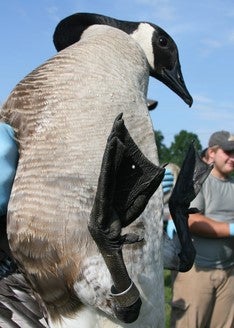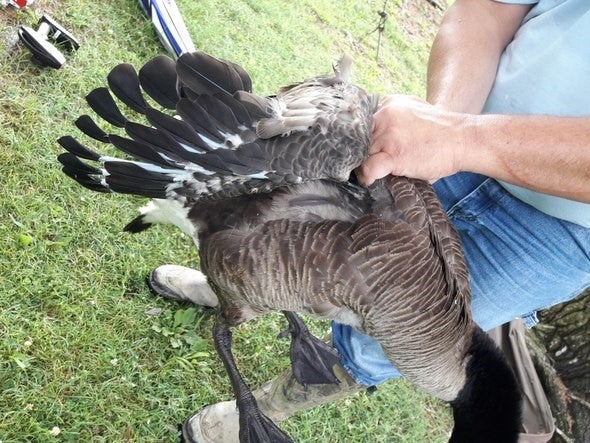
Xplor reconnects kids to nature and helps them find adventure in their own backyard. Free to residents of Missouri.


































Stay in Touch with MDC news, newsletters, events, and manage your subscription

Xplor reconnects kids to nature and helps them find adventure in their own backyard. Free to residents of Missouri.

A monthly publication about conservation in Missouri. Started in 1938, the printed magazine is free to residents of Missouri.




CAPE GIRARDEAU, Mo. – Missouri Department of Conservation (MDC) employees temporarily trapped a total of 900 Canada geese over the last two weeks in the state’s southeast region. Geese were collected and banded, then quickly released, in Cape Girardeau, Dexter, Farmington, Jackson and Poplar Bluff. Although Regional population numbers are stable, biologists are concerned to see some that had irreparable wing damage caused by poor diet. This is commonly called “angel wing” where the end of the wing twists outward from the body.
“We see it in more urban areas where the geese are fed bread or cereal by well-intentioned people,” said Nicole Walker, a MDC wildlife management biologist. “Unfortunately, bread doesn’t have the nutrients geese need, so they may develop drooping wings and can even lose their ability to fly.”
Artificially fed geese may show signs of malnutrition by being underweight or show poor molting or unhealthy wing feathers, Walker said. In natural settings, waterfowl seek and feed on a variety of nutritious foods such as aquatic plants, natural grains, and invertebrates such as insects and worms. People tend to feed bread, corn, and popcorn to geese, which are low in protein and very poor substitutes for their natural foods. Feeding geese can also artificially congregate birds in areas creating a situation where too many birds quickly become a nuisance to the public in some settings.
“It’s like feeding a person a daily diet of donuts,” Walker said. “If most of a diet is filler ingredients with no nutrients, there won’t be a healthy result.”
Walker said the solution is to simply stop feeding the geese and allow them to find natural foods that meet their biological needs.
“If everyone stops feeding the geese, they won't disappear,” she said. “Families can still enjoy viewing geese and parents can teach children how to respect the geese, learn about them and help them by not interfering.”
Canada geese are banded in several portions of the Mississippi Flyway each year for the purpose of learning about production of young, mapping the distribution and timing of the harvest and to calculate survival and recovery rates. When examining the geese, biologists note the general health of each bird, look for a brood patch in the adult females indicating that they laid eggs this year, and look for abnormalities such as foot damage or past injury. For geese that are recaptures, they check to ensure their band is still legible and attached correctly, and replace or adjust it to better fit the leg.
“At this time the population within our flyway is looking very positive,” Walker said. She added that the last survey of giant Canada geese across the Mississippi Flyway between 2016 and 2017 observed an increase in the population by roughly 16 percent, indicating a stable to growing population. However, where biologists are managing wildlife in suburban environments, the trick is to find the right balance of goose numbers so that local parks, golf courses, and privately-owned ponds are not overrun with birds to the point that they are a nuisance.
Walker said that while the larger population tends to ebb and flow depending on larger weather patterns, it is very important for wildlife management agencies to manage the populations at a local level. In some cases, MDC works with landowners and communities to make ponds and lakes less attractive to deter Canada geese.
“By continuing these monitoring and banding efforts we can keep a close eye on these populations, monitor harvest trends, track general movements of birds within the areas, and keep an eye on overall bird health,” she said.
For more information on waterfowl in Missouri, go online to www.mdc.mo.gov.